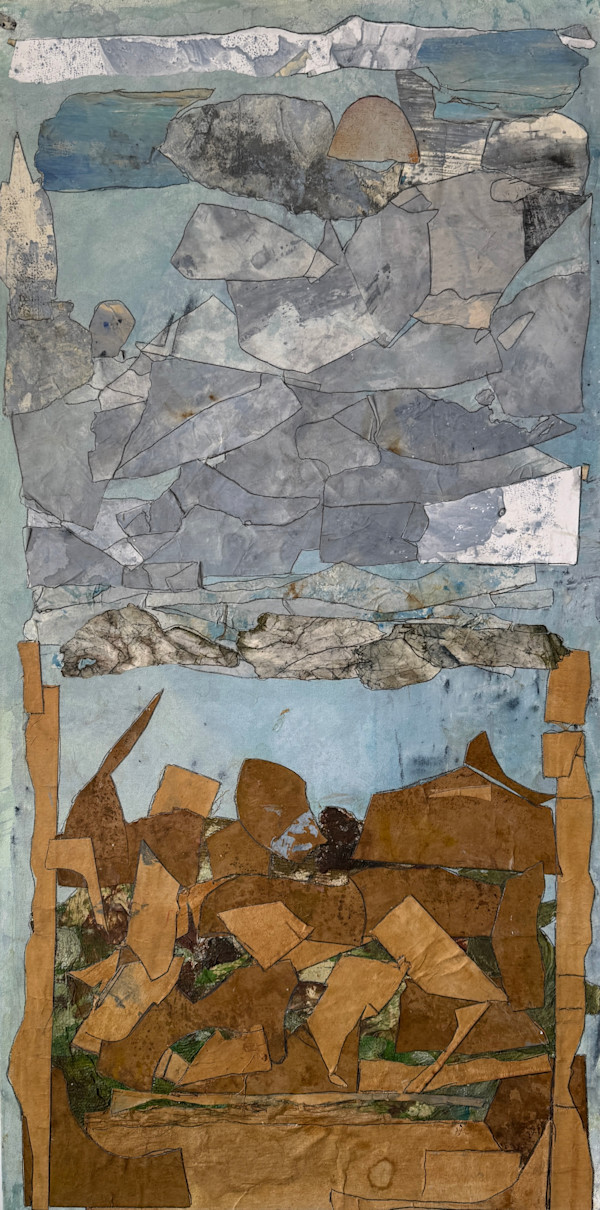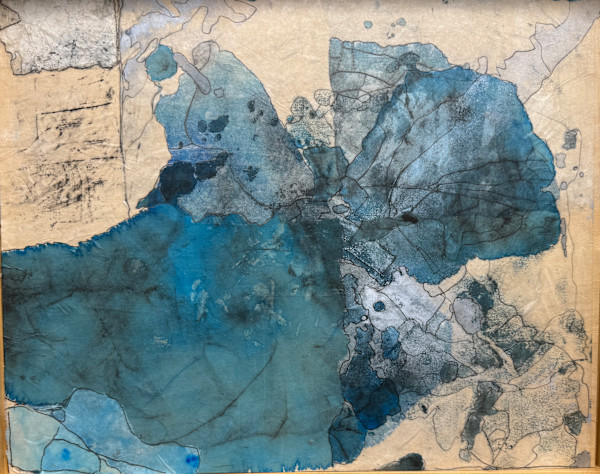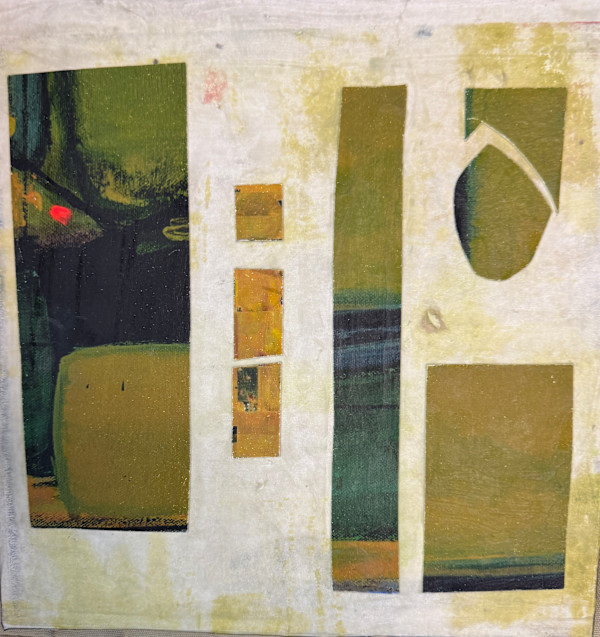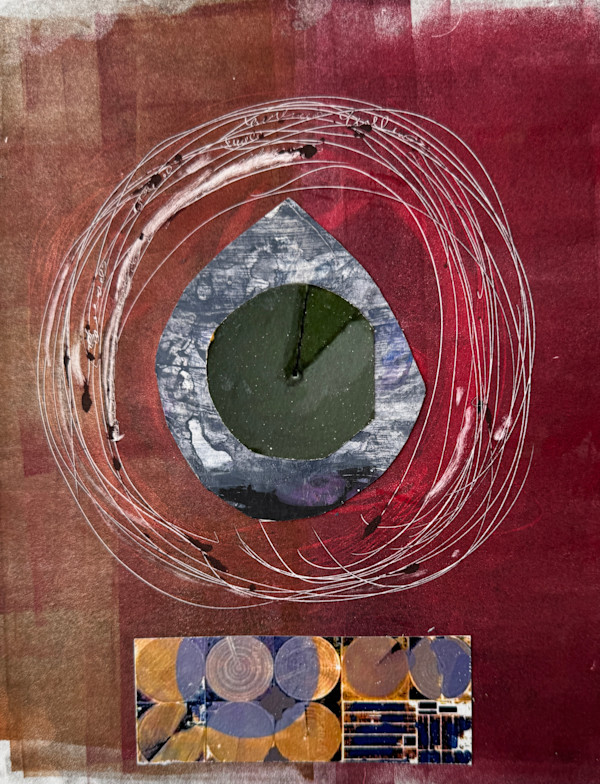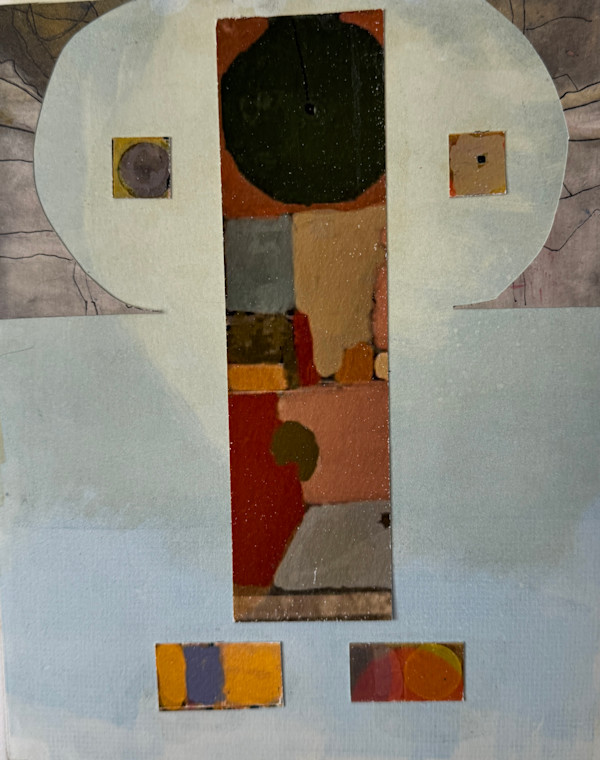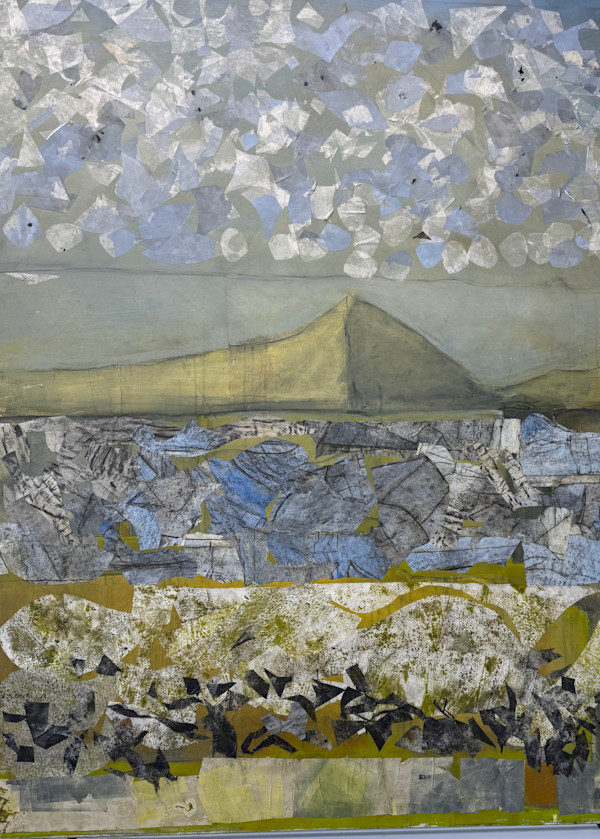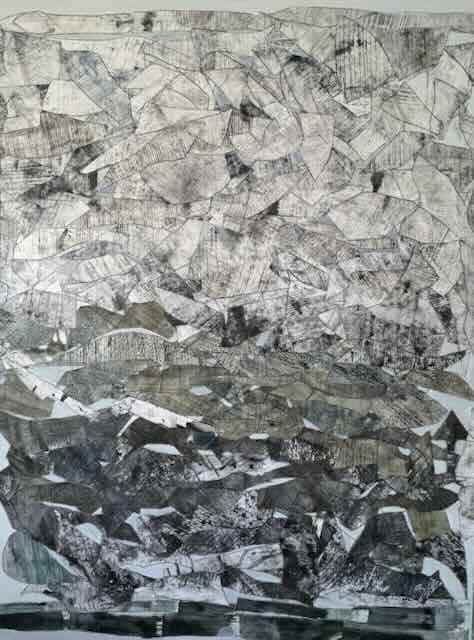
This work draws direct inspiration from the contrapuntal architecture of a Bach fugue — a form in which multiple independent voices intertwine to create a single, coherent musical statement. Here, that polyphonic structure is translated into the visual language of abstraction. Each fragment, texture, and tonal shift corresponds to an entering voice, a restatement, or a modulation within a larger fugue-like conversation.
The upper regions of the composition introduce the subject: a lattice of graphite lines and pale tonal fragments that establish rhythm, direction, and structure. These marks function as a visual melody—articulated through repetition and variation. Descending into the middle register, muted greens and grays introduce the answer and countersubject, moving in visual “contrary motion” to the linear patterns above. Their layered density suggests imitation and harmonic interplay, as though one visual phrase calls and another responds.
Deeper still, the darker, compressed passages create a stretto, where the entries of the theme overlap and collide. This section becomes both the visual and emotional climax of the piece—an area of tension, energy, and harmonic saturation. Between these dense moments, pale intervals of open space act as episodes, brief modulations where the eye can rest before the next statement resumes. At the base, a horizontal band anchors the composition like a pedal point—a sustained note that underpins the polyphony above and brings the entire structure to resolution.
In its construction, the work echoes Bach’s Art of the Fugue, not as imitation but as translation. It explores how form, repetition, and variation can evoke musical order within the visual field. The collage-like layering of monoprint textures, graphite hatching, and translucent pigment parallels the counterpoint of musical voices—each independent, yet inseparable from the whole.
Ultimately, the piece aspires, in Walter Pater’s phrase, “to the condition of music”: a state where abstraction speaks directly to emotion, and structure becomes a vessel for resonance and rhythm beyond language.
- Collections: Rock/Paper/Scissors , The Condition of Music


